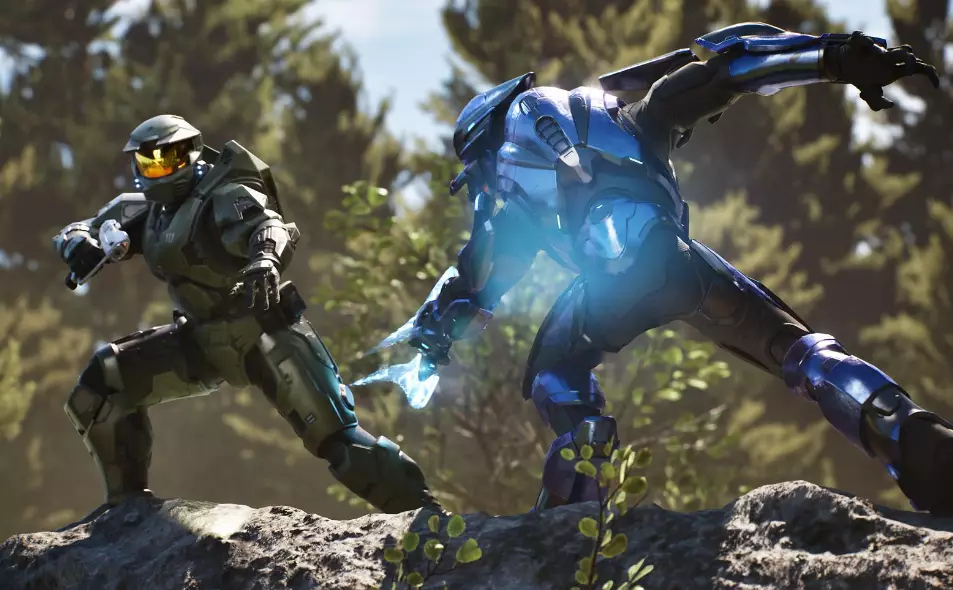In December, Prime Video unveiled “Secret Level,” a video game anthology series that has sparked considerable interest due to its promise of showcasing diverse video game franchises. However, what stands out from the initial buzz is not just the variety of titles represented but also the notable absences, particularly iconic franchises such as Halo and Doom. The reason behind these missing elements is not simply a matter of oversight; it reveals the intricate dynamics of intellectual property negotiations in the entertainment industry.
Supervising director Dave Wilson and creator Tim Miller recently shared insights into their struggles to secure trademark rights for these major franchises. Their attempts to integrate characters like Master Chief and the Doom Slayer into the show were met with resistance and complications during negotiations. As Wilson articulated, the novelty of the project was met with skepticism by certain development executives. Their pre-existing commitments with other companies created barriers that made it difficult for the team at “Secret Level” to incorporate these beloved characters into the anthology.
One cannot underestimate the complications that arise when a creative project intersects with established franchises, particularly those owned by tech giants like Microsoft. Despite Wilson and Miller’s concerted efforts, which included drafting a lengthy letter to Microsoft, their pleas ultimately fell on deaf ears. The rejection unveiled a widespread assumption: that Microsoft was uninterested in engaging with an emerging concept that they perceived to potentially interfere with their existing partnerships.
Miller expressed frustration regarding online criticism suggesting that the creators of “Secret Level” had opted for lesser-known games at the expense of renowned franchises like Halo. Contrary to these assumptions, Miller insisted that the creators actively pursued partnerships with Microsoft to bring Halo’s Master Chief into the fold. The intricacies of corporate strategies and relationships, including Microsoft’s past collaborations, complicate the landscape of negotiations. Ironically, while the “Halo” series has occupied the spotlight with its adaptation by Paramount, it remains unclear why a crossover episode with “Secret Level” was not feasible.
While characters such as Master Chief and the Doom Slayer were ultimately left out of the show’s first season, “Secret Level” did manage to include an episode dedicated to “The Outer Worlds,” a game developed by a Microsoft subsidiary—Obsidian. This highlights an interesting contradiction; there are opportunities to spotlight games under the Microsoft umbrella, yet the most iconic characters were still missing. Alongside them, several notable Sony PlayStation franchises such as “God of War” and “Little Big Planet” surfaced, showcasing the anthology’s more eclectic selection.
Furthermore, Wilson hinted at missed opportunities for other high-profile gaming franchises. Without disclosing names, he mentioned that some intellectual properties that were buzzing in popularity at the time fell through the cracks, illustrating Hollywood’s unpredictable nature. The nature of the entertainment industry often leads to situations where promising collaborations do not materialize as expected, serving as a stark reminder of the challenges inherent in securing film adaptations.
As “Secret Level” gears up for a second season, anticipation lingers over what franchises might eventually appear. While the first season was met with mixed reviews, the creators remain optimistic. The team’s relentless passion shines through their desires to craft compelling narratives that bridge gaming and television. Even as they faced setbacks, their commitment to enthralling narratives has laid the groundwork for future collaborations.
In the end, “Secret Level” exemplifies both the potential and pitfalls of adapting video game lore into the collage of television storytelling. As they continue to navigate the complex waters of intellectual property acquisition, the series stands as a testament to the challenges that lie behind the scenes of any of today’s beloved franchises. The convergence of gaming and television has only just begun, promising a dynamic future where beloved characters could ultimately find their way to the screen, should negotiations align favorably.

